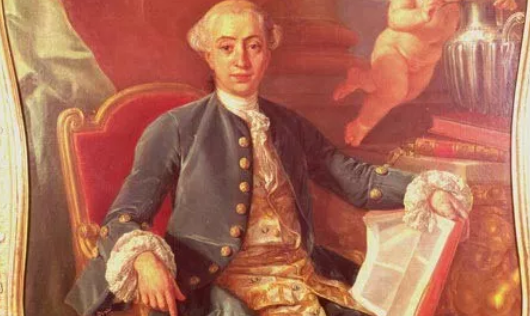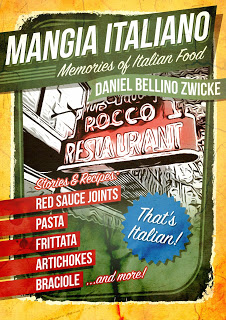.
(1724 – 1798)
Giacomo Casanova was born in Venice on 2 April 1725, the eldest son of a Spaniard Gaetan-Joseph-Jacques Casanova and his Italian wife Zanetti Farusi, both actors. His father died when he was around nine or ten and his mother continued traveling with her acting troupe, leaving her six young children as always with their maternal grandmother Marzia Farusi; Casanova and his siblings don’t seem to have had much of a relationship with their mother then or later in life. Casanova describes himself as having being ‘a vegetable’ until the age of eight, by which we should infer nothing much interesting or eventful happened in his early growing years. However he did begin his education and showed himself to be an unusually bright young fellow. Not bright enough to have developed a complete understanding of himself as yet though. His first choice of a career, funnily enough, was Priesthood – even in an era when nobody was particularly chaste or saintly, he would have been a real disaster in that role. Fortunately for him, his roving eye ruined this prospect before it even began and, never the one to be cast down by anything for very long, he shrugged, studied Law instead, and let himself loose on the secular world next.
For the rest of his life, Casanova was to remain, what can only be described as, a Jack of all Trades – and Master enough of himself to get out of all the sticky situations that these Trades invariably got him into. He developed into a real tolerant, open-minded individual – he usually refrained from pointing fingers at other people’s morals and never hesitated in giving them plenty of reasons to be sniping about his in turn – if they sniped too much and too loud, he was always forward in inviting them to duel – and he was rarely the one to be carried off the field with many wounds to lick. He made time for practically all the fools he came across – to fleece them for all they were worth – and for most of the women and girls that crossed his path. He nearly married on several occasions, but last minute escapes prevailed every time. On one occasion he almost married his own illegitimate daughter – he had several illegitimate children that he either never heard of or came to hear of, like on this occasion, a mite later in life. Certainly though, he never worried his head too much about them. But then he wasn’t prone to worrying too much about anything. This perhaps was the main ingredient of his carefree existence. If one thing doesn’t work, well, never mind, let’s move on to something else, let’s see what’s around the next bend. And if it was necessary to bend a bit to get around the bend, hey, no problemo whatsoevero, in this life of ours some adjustment is always necessary.
Casanova’s talent for adjustment saw him traveling widely – Florence, Italy, Spain, Russia, Poland, Germany, England, France, Switzerland, Holland, Belgium, Austria, Turkey – and coming into contact with a wide spectrum of society, from peasant-folk to city thugs to ordinary middle-class people to the very rich and affluent to the aristocrats and royalty. He had close social contacts with the King of France, with Catherine The Great of Russia, with George III of England, with Frederick The Great of Prussia, with Joseph II of Austria, with Benedict XII in Rome, with the French thinkers Voltaire, Rousseau, d’Alembert, Crebillon, and many other eminent personalities of the day. He also found himself a prisoner of the Inquisition in Venice’s notorious Piombi prison for 15 months – for expressing his personal opinions on religion and morality a little too publicly – he would probably have languished there forever except for his irrepressible spirit – after one failed bid to escape, he tried again and his hair-raising second attempt was a success. Unlike one of our modern heroes, Casanova doesn’t appear to have suffered from much post traumatic stress as a result of this ordeal. He dusted himself off and coolly went back to the business of living. He always took care to live particularly well, with good food, clothes, and lodging. He made a great deal of money from his various schemes and lost it all rather quickly. The concept of saving was just beyond him.
Some twenty years later, needing money, he was back in Venice, opportunistically seeking employment with the very people that had once arrested him. It seems they were as prepared to be forgiving and he worked for them as a Secret Agent from 1774 to 1782. Then he left Venice for the last time and went to Paris. Here he met Count Waldstein who invited him to come live on his property, the Chateau Dux, in Bohemia and work there as a Librarian. Quite a career change, but perhaps a little peace and quiet was just what Casanova was looking for. He accepted and spent the next fourteen years at Dux.
It wasn’t demanding work and gave him ample time for intellectual pursuits of his own – aside from his memoirs, on which he worked diligently, he wrote on Mathematics, Philosophy, Grammar, Poetry, Short Stories, Plays, and so on. He also maintained a voluminous correspondence with friends, acquaintances, and former lovers. Age didn’t in any way diminish his general enthusiasm. Just prior to his death – on 4 June 1798 – he was described by the Prince de Ligny as: “At 73, no longer a god in the garden or a satyr in the forest, he is a wolf at table.”
The GRITTI PALACE HOTEL
HOTELS in VENICE & WORLDWIDE
.
.STORIES of ITALIAN FOOD
In ITALY



























































